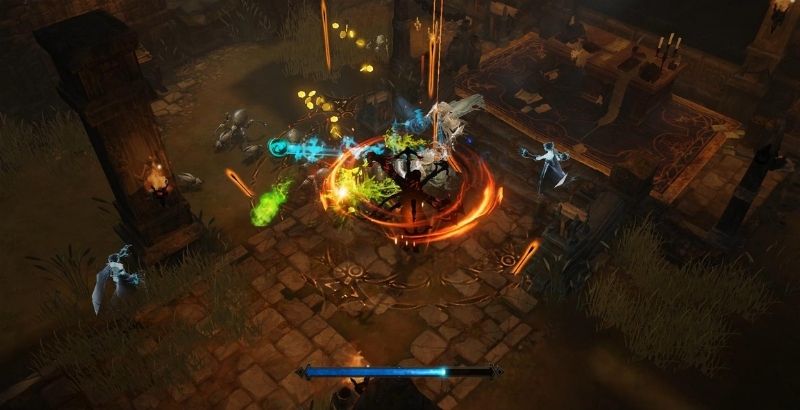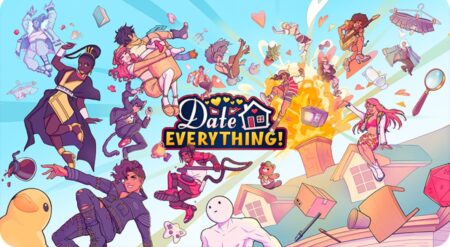The announcement of Diablo Immortal is a moment in the games industry that will live in infamy. Seen by many as a tone-deaf move by series developer Blizzard Entertainment, the heavily memed “don’t you guys have phones?” moment put Diablo Immortal in a more complicated position than any AAA franchise moving into the mobile space would normally be. But now that the NetEase Games developed and Blizzard published title is out, how does it actually stack?
For my time with the game, I only played the PC port, so I cannot comment on how the game runs on mobile phones. Unfortunately, PC ports of mobile games don’t have the best track record, and Diablo Immortal is no different. The settings are terribly barebones, the UI is garishly large, and the hitbox for selecting items and interacting with points of interest is tiny. The control prompts are also nearly unchanged for the PC port, like clicking is almost always called tapping to fit a phone’s touch screen.
Outside of the technical blemishes, the core gameplay loop of what has made so many fans fall in love with Diablo is perfectly preserved here. At the start, players can choose from classic classes found throughout the series before changing their character’s gender and appearance. From there, the story proceeds precisely how you would expect from a Diablo title.
The world of Sanctuary is under the threat of being taken over by a Lord of Hell that looks suspiciously similar to the titular Diablo. To stop the forces of evil, the player has to help Deckard Cain travel across Sanctuary to collect pieces of the Worldstone and crush the efforts of evil forces wherever they go.
While the game’s story is nothing new for the series, it gets the job done admirably well. The story lasts around 10 hours, and while none of its characters are very impressive in their own right, things move along quickly enough to keep the player hooked as they chase the coveted next level up.
Some of the locations throughout the campaign are also gorgeous and extremely creative. My personal favorite had a massive titan pound its fist beneath a glass floor as you fight the forces of evil above it, making it one of the most dynamic and visually impressive environments in the entire series.

But the real attraction of any Diablo game is its action RPG combat loop, and Diablo Immortal delivers in spades there. Each of the classes in the game comes with a complete skill tree, with the player being able to slot four active skills and a main attack alongside their class’ ultimate ability.
Players are then pitted against hordes of enemies that they can carve through with a chaotic dance of their abilities and movement. The hordes never seem to get quite as large as they do in previous mainline titles, but the combat is still an absolute blast.
Each class has a couple of viable approaches to combat, and the game even has three recommended builds that can be checked if you need some help figuring out how to combine skills effectively or just want to experiment. With all of that in mind, Diablo Immortal is a big success for the first handful of hours. Only when the game’s resource economy started rearing its head did the game’s blemishes begin to show.
Like an unfortunate number of other mobile games, Diablo Immortal’s economy is a bloated heap of different resources and currencies that take a spreadsheet to track. They are introduced to the player in a steady trickle from the very beginning, all the way up to the level cap.
This by itself isn’t the worst thing, but when one gets to the endgame of Immortal, it is revealed that to participate properly, you have to front a sizable bill every once in a while. Even the mid-game leveling is slowed down to a crawl of repetitive activities, but the endgame is where Immortals’ systems begin to really boil over. The most efficient methods of grinding for gear are locked behind an absurdly high-level cap. The only way to reach that cap even semi-efficiently is to purchase various currencies and resources to unlock activities like rifts.
The game’s approach to monetization may not sound very new to the mobile games industry, but it has a sinister layer to it that is noteworthy. Diablo Immortal doesn’t just charge the player for better gear or to speed up progression but instead charges for progression overall. After a player is done with the game’s main story, the only thing left to do is hunt for better gear and an optimal build; this is a looter game, after all.
However, to make late-game builds, you have to get your hands on Gems which can have ranks of up to five stars. Players get these Gems through loot boxes at the end of Rifts, randomized dungeons that can be modified by slotting Rare and Legendary Crests into the Rift’s portal at the beginning of them. Players are given plenty of Rare Crests throughout the game, but as of right now, even if you purchase the Battle Pass you can only get a total of three Legendary Crests before having to buy more. Furthermore, since Rare Crests can only drop at best a Gem that is capped at two out of five stars (and even then, it is only a 20% drop rate), players meet a hard progression wall where they need Legendary Crests to get better Gems to progress.
So, you’ll need to purchase Legendary Crests for a chance to get an actually worthwhile Gem, but even using a Legendary Crest is not an absolute solvent here. When using a Legendary Crest, two-star Gems only have a 3.75% chance of dropping, while five-star gems only have a 0.05% chance. There is a pitty system where you are guaranteed to get a five-star gem every 50 Legendary Crests, but even reaching that number will require you to spend at least $100 on Legendary Crests first.

The worst part about this system is that there is no free alternative. As of the time of writing, Legendary Crests cannot be earned by grinding for a free currency or saving up a trickle of premium currency that the game gives you for free, as is an option in games like Genshin Impact. Instead, the only way to get them is through microtransactions, with some outlets, like Forbes, reporting that endgame builds are expected to cost players anywhere from $40,000 to $100,000.
If you aren’t looking to play Diablo Immortal into its endgame, it is a fun, if slightly pared-back, interpretation of the Diabloformula. However, mobile games like this one and Diablo as a franchise are largely based on establishing an endgame that allows players to keep coming back to the game. There are still players that engage with the endgames of Diablo 3 and Diablo 2 years after their releases. Still, for Diablo Immortal, you cannot do so unless you pay for the privilege of further progression on top of the game asking for money to get cosmetic items, a battle pass, and various other time savers.
For most of my time with Diablo Immortal, I was pleasantly surprised. The translation of the series seemed to be handled reasonably and was a great distillation of what makes the franchise succeed to begin with. But when I reached the endgame content, it became clear that all of that was to trap me in an exploitative revenue scheme.
I would have been more than willing to buy a battle pass here and there or even some cosmetics or expansions to support Diablo Immortal into the future, but its bold and scummy approach to manipulating vulnerable players not only soured my entire experience with the game but marks a dangerous cornerstone in the monetization of similar products in the future.
Diablo Immortal is available now on Android, iOS, and PC.
Diablo Immortal
-
Rating - 5/105/10
TL;DR
For most of my time with Diablo Immortal, I was pleasantly surprised. But when I reached the endgame content it became clear that all of that was to trap me in an exploitative revenue scheme. I would have been more than willing to buy a battle pass here and there or even some cosmetics or expansions to support Diablo Immortal into the future, but its bold and scummy approach to manipulating vulnerable players not only soured my entire experience with the game but marks a dangerous cornerstone in the monetization of similar products in the future.







